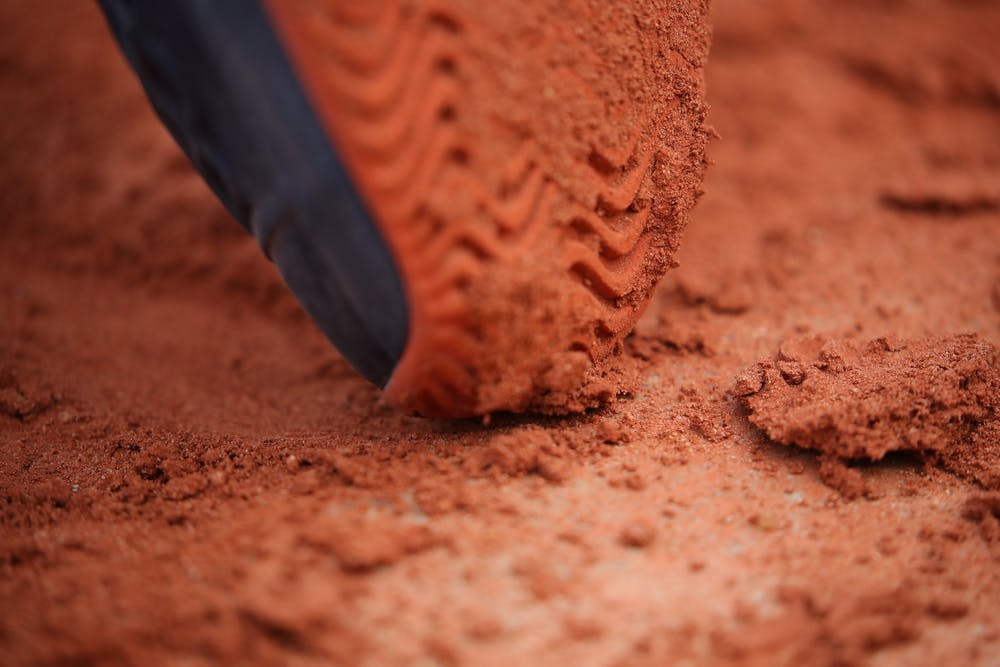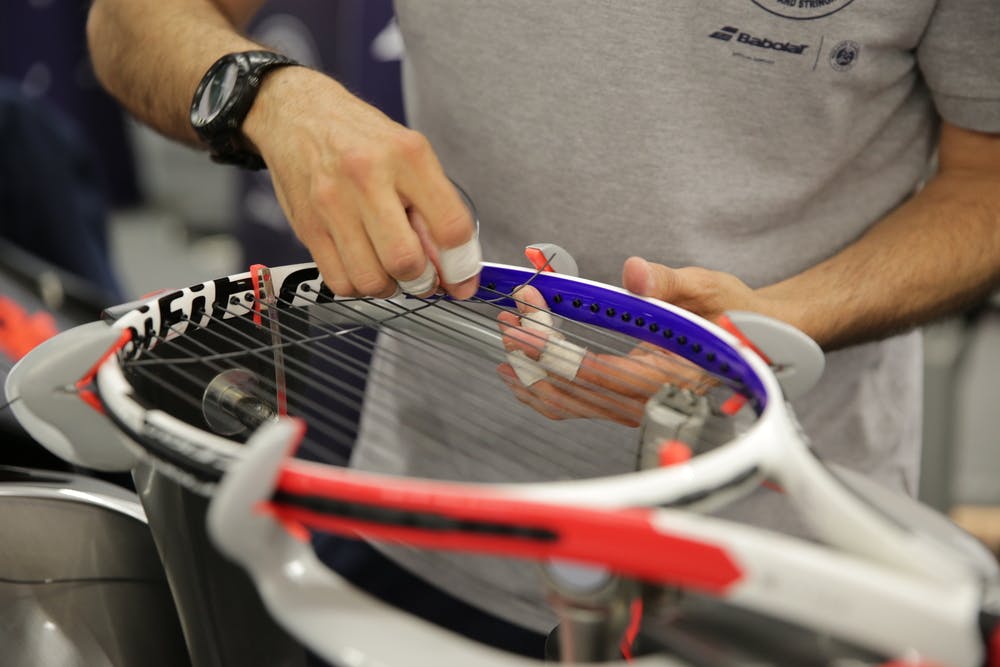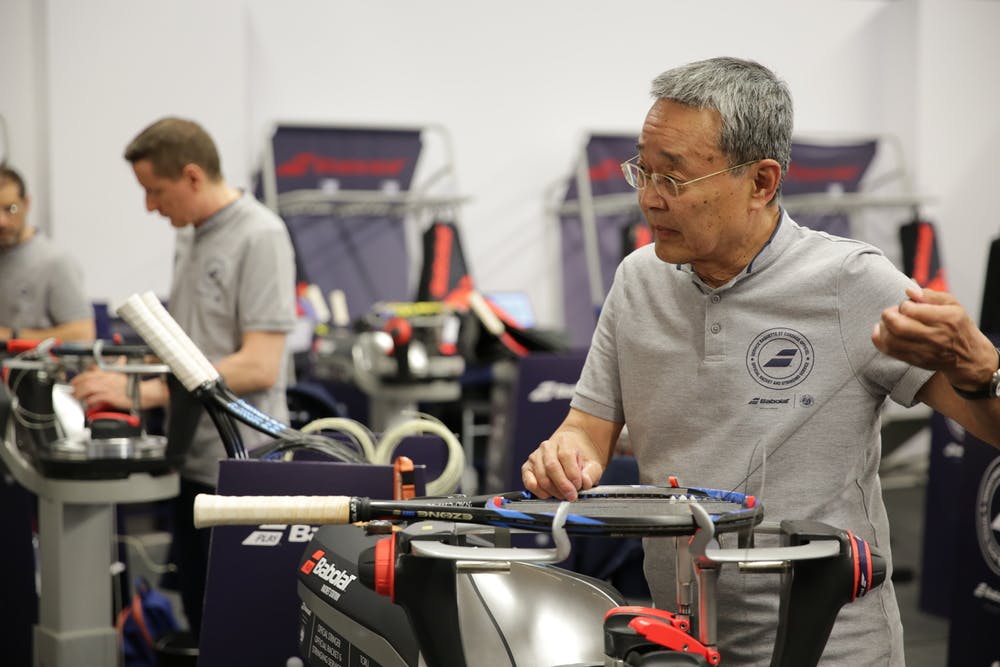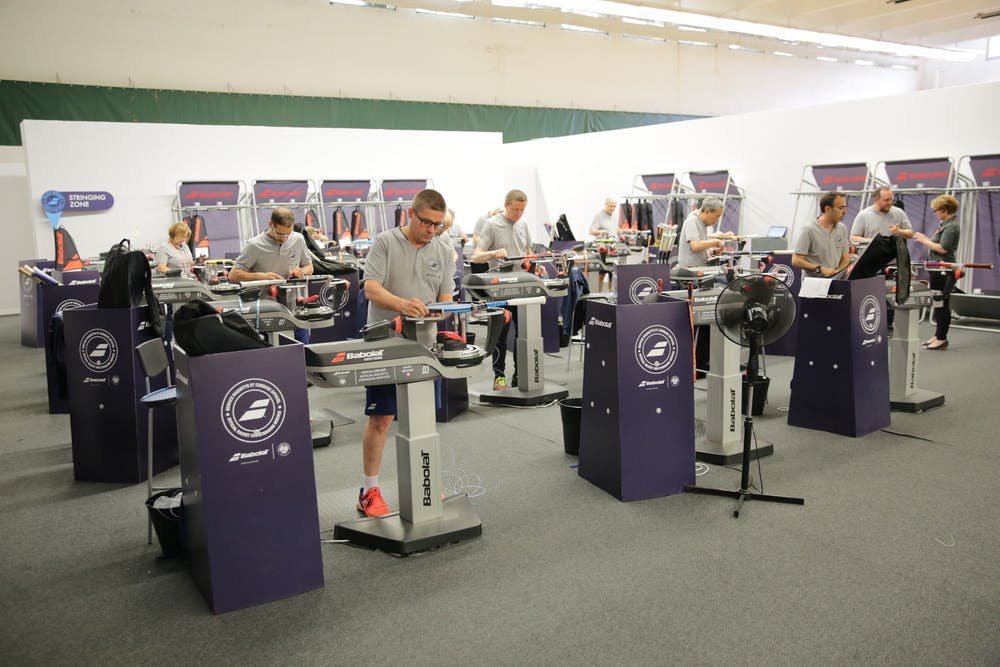Also read
Roland-Garros jargon explained

Racquet stringers' HQ is the engine room of the tournament. Rolandgarros.com takes a tour.

What do you get if you divide 67,000 by 5,667? The answer (11.8) is the average number of metres of string required to prepare one of the racquets brought on court for training and competition during Roland-Garros.
In a vast cavern beneath Court 1, the Service Racquette et Cordage is a hub of perfectionist activity, manned by a nimble-fingered team of 40, dedicated to customising each player’s idiosyncratic equipment preferences.
Static weight, swing weight, balance, ergonomics, you name it: every player can have his or her racquet customised with millimetre and gram accuracy.
On paper, Rafael Nadal and Dominic Thiem are the same height and stand 2-2 in their last four meetings on clay; their unstrung Babolat racquets both weigh 317g and are strung to a tension of 25kg - yet their style of play calls for a series of nuanced differences in the technical minutiae of their set-up. (For tennis anoraks, the specifics are as follows: the Spaniard opts for a guage of 135mm, balance of 328mm and swing-weight of 330kg.cm2; the Austrian requests a corresponding 125mm, 314mm and 310kg.cm2.)

In the game of percentages that is elite-level tennis, racquets must be strung with extreme precision.
“Each player has one stringer who works on one machine for the entire tournament to ensure consistency,” says manager Sylvain Triquigneaux as he takes rolandgarros.com on a tour of the facility.
From the reception desk to the pick-up point, we follow the same path travelled by a total of nearly 6,000 racquets, a sacred few of which will prove to be the instruments of glory wielded by the Roland-Garros champions of 2019.
The Reception where a computer screen displays the tally of racquets prepared to date (2,777 at the time of visit) and the length of metres used (33,108), statistics which are updated regularly as players and coaches deposit their racquets with set-up requests and delivery instructions (standard, express or match in course). We watch Gilles Simon submit his racquet bag. On average, players carry eight racquets onto court and might request slight differences in string tensions for individual racquets. The work sheet is printed and inserted in the racquet bag: the process has begun.
The Cleaning Zone. Scissors, clippers, pliers and awls are used to remove the old strings. A squirt of Cif on a soft cloth removes any residual terre battue. A small ID label is inserted in the yoke of each racquet.
The Customising Zone. “This is where anything that needs fixing is fixed,” says Triquigneaux. Grips can be changed. Racquet specs can be adjusted. Tiny pieces of grit caught in the frame can make an irritating noise when the racquet is swung at speed; it is here these can be removed.

The Stringing. A team of 21 expert technicians from 12 countries including Japan, Spain, the United States, Greece, the United Kingdom, Argentina, France, Croatia and South Korea operate from their own allotted machine, collecting racquets from their personalised shelf (the stringer's equivalent of an in-tray) and stringing each racquet in under 20 minutes.
The average tension required is 23.7kg, but the scale runs from a minimum of 5.9kg to a maximum of 36kg. Nadal’s stringer will fine-tune his racquets on a regular basis; the 11-time Roland-Garros champion changes racquet every seven games, in training or competition, and sends his used ones back to the stringers, one by one, to ensure a continuous supply of primed on-court weaponry.
Logo Zone. A file holds the full gamut of different brands’ trademark logos. The string bed (nice technical term, non?) of each racquet is then stencilled in a specific colour of ink with the logo of the player’s sponsor and held in front of a fan to dry.
In the final stage of the process, the racquets are zipped up in the requisite player’s bag with their original paperwork and hung on the appropriate hook according to the first letter of their surname. The room is ringed on three sides with hooks running from A for Albot, Andreozzi, Andujar, Auger-Aliassime, Alexandrova, Azarenka and Anisimova et al to Z for Zeballos, Zverev, Zhang, Zheng, Zhu, Zidansek and Zvonereva. All in all, it's an impressive operation.